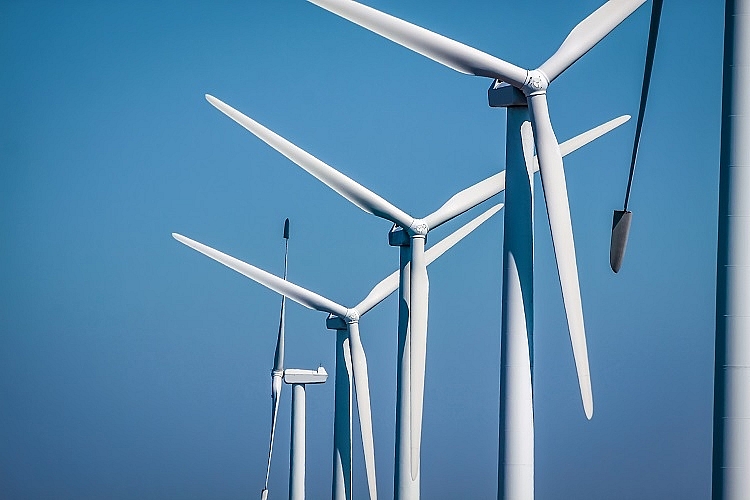Vietnam must remove regulatory challenges to encourage wind energy
 |
| Vietnam must remove regulatory challenges to encourage wind energy, photo shutterstock |
According to the latest GWEC report entitled South East Asia Market Update - Insights on Vietnam, by the end of 2018, the total capacity of wind power projects in the country had reached 228MW. This was an insignificant number compared to other developed markets.
The Government, meanwhile, set an ambitious goal to raise the capacity to 800MW by 2020, and then to 2GW by 2025 and 6GW in 2030.
According to Benoit Nguyen, head of the Renewables Advisory Section of Singapore-based DNV GL’s Clean Technology Centre, Vietnam and other Southeast Asian countries have great fundamentals to develop renewable energy with average wind speeds between 6.5 and 7.5m/s.
The feed-in-tariff (FIT) for wind energy is also favourable at US8.5 cents per kWh for onshore plants and 9.8 cents for offshore plants in order to promote investment and ease risks, specifically power purchase agreement bankability
The price range is exclusively set for projects coming into operation before November 2021, and the rates for later projects remain unknown.
Tax-free policies which apply to imported facilities and corporate incomes have become Vietnam’s competitive advantage to attract investment.
Meanwhile, arbitration law, curtailment, termination and government guarantees are among the biggest risk factors for international investors in the emerging market.
Regulatory risks involving land lease contracts, pricing, capacity-building, labour, insurance and environmental impact assessments also create barriers for the development of wind power in Vietnam.
Liming Qiao, Asia Director of GWEC, recommended formalising power purchase agreements and simplifying the project approval procedure to encourage investors to join the field.
According to Bloomberg New Energy Finance, several factors have helped to reduce investment cost while increasing project efficiency.
Turbine prices have dropped about 45 per cent over the past seven years. Operation and maintenance expenses are also on the decline.
The GWEC’s report states that Vietnam has the potential to be a wind power leader in the region, as long as any issues and challenges can be overcome by stakeholders.
In late May, at a seminar held in HCM City, experts warned Vietnam could experience a power shortage in the near future due to surging demand and challenges in development.
There has been little investment in wind power projects. Solar power is on the rise but is highly dependent on the weather.
What the stars mean:
★ Poor ★ ★ Promising ★★★ Good ★★★★ Very good ★★★★★ Exceptional
Related Contents
Latest News
More News
- Honda launches electric two-wheeler, expands charging infrastructure (January 12, 2026 | 14:00)
- Vietnam striving to ease air pollution (January 09, 2026 | 14:41)
- Petrovietnam Gas awards first multi‑year LNG deal to Shell (January 09, 2026 | 14:38)
- Advancing the net-zero journey: Carlsberg Vietnam’s sustainability progress in 2025 (January 09, 2026 | 09:49)
- The green hydrogen and ammonia future for Vietnam (January 06, 2026 | 15:03)
- Green transition to close $20 billion annual investment gap (December 31, 2025 | 11:59)
- Australia contributing to Vietnam’s climate change responses (December 30, 2025 | 11:37)
- CME Solar strengthens position in Vietnamese renewables (December 30, 2025 | 11:21)
- Self-care signals shift towards sustainable healthcare (December 30, 2025 | 10:12)
- GreenYellow marks five years of clean energy growth in Vietnam (December 26, 2025 | 15:51)

 Tag:
Tag:




















 Mobile Version
Mobile Version